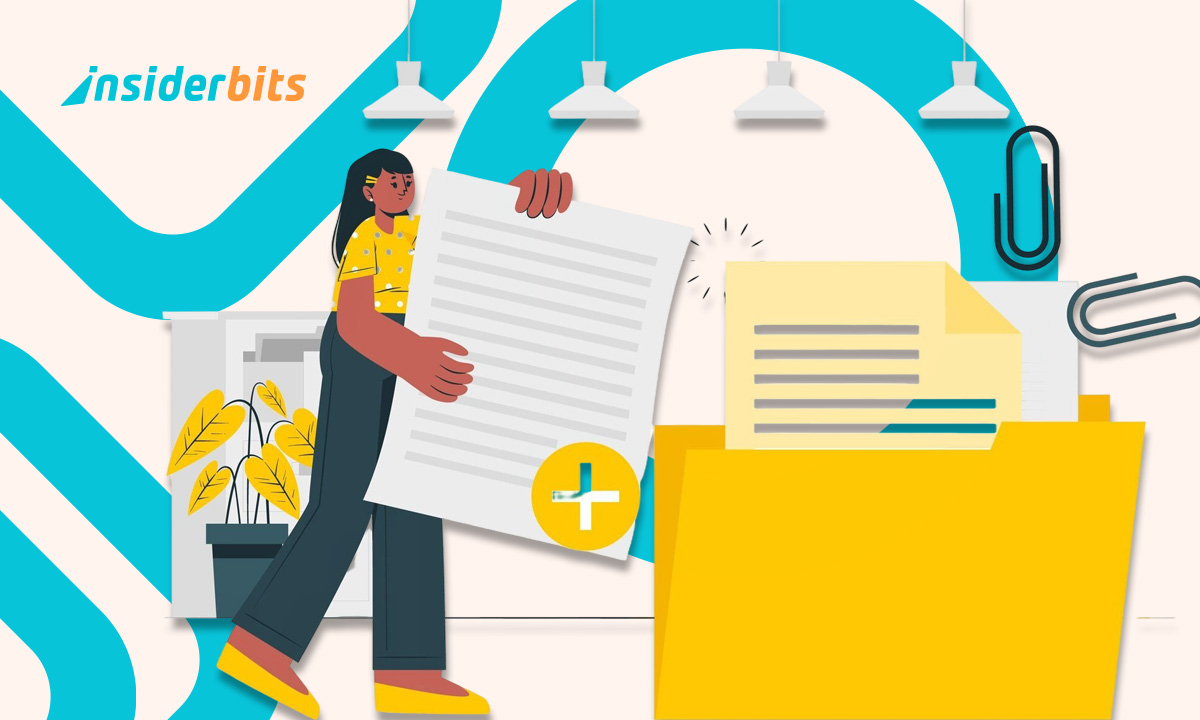To organize physical documents with modern scanning apps helps to preserve history and bring structure to your life. From old photographs and handwritten letters to certificates, paper archives often hold memories and essential records that risk being lost over time.
Digitization transforms these fragile materials into lasting files that are easier to handle, making document organization both functional and emotional. With the right tools, it’s possible to turn drawers full of paper into a neatly categorized, cloud-based library ready for today’s mobile lifestyle.
- How to organize your phone? Learn about apps to optimize phone storage
- Planificateur de vie : L'application pour organiser vos projets et vos rêves
- Organisez votre vie numérique : Applications de stockage et d'organisation des données
Why Digitizing Physical Documents Matters
Choosing to organize physical documents like family photos means preserving identity, memory, and heritage in a format that endures.
As we all know, paper is vulnerable to time, while digital files offer permanence. That’s why it is so important to digitize old documents.
By doing this, everyone can avoid having photos stored on paper to fade into the past, but those captured in digital form remain shareable across generations and platforms.
This modern approach empowers you to reconnect with the past while preparing your archives for the future.

Best Apps to Scan Physical Documents and Old Photos
To organize physical documents effectively, choosing the right scanning tool is essential, especially when dealing with photos or documents that need preservation.
Below, we explore three options that simplify this process while delivering impressive results through user-friendly design.
CamScanner
Firstly, CamScanner offers a complete toolkit for users who need to scan large volumes quickly without sacrificing quality or structure.
Among the features of this app, we can highlight that it detects page edges automatically, enhances image brightness, and removes background shadows, helping even crumpled or aged documents appear clear and flat.
Its batch scan function and intelligent cropping make it easy to digitize dozens of documents in one session, perfect for organizing long-neglected stacks of paper.
Lastly, CamScanner also supports multiple export formats, including PDF and JPG, and lets you sync your files with Dropbox or Google Drive in just a few taps.
4.8/5
Adobe Scan
Adobe Scan excels in converting physical content into clean digital files with layered intelligence built into every scan.
One of its strongest features is the text detection (OCR), which accurately captures printed or handwritten text while preserving the document’s layout and orientation.
This is especially useful for scanned forms, notebooks, and old photo albums, where clarity and structure are equally important for future use.
With tight integration into Adobe Document Cloud, users can edit, sign, or comment on files directly, making Adobe Scan ideal for archival and active document workflows alike.
4.9/5
Microsoft Lens
Microsoft Lens provides a clean and intuitive interface that syncs naturally with Microsoft 365, allowing scanned content to flow directly into Word, OneNote, or PowerPoint.
Also, its image straightening and corner detection features ensure photos and documents remain sharp and properly aligned, even when scanned at awkward angles.
For users already invested in the Microsoft ecosystem, Lens creates a seamless experience from capture to editing to secure cloud storage.
It’s especially well-suited for educational and professional use, where scanned content often needs to be inserted into ongoing projects with minimal delay.
4.9/5
How AI Enhances Old Documents After Scanning
Once you organize paper documents through scanning, AI technology becomes essential for restoring quality in fragile or distorted images.
For example, Adobe Scan uses built-in machine learning to balance color, enhance text, and remove background distractions, producing polished outputs even from subpar lighting or old prints.
On the other hand, CamScanner adds AI-powered clarity tools that sharpen edges and smooth out inconsistencies, especially helpful for older or handwritten content with visual noise.
Lastly, Microsoft Lens contributes subtle but powerful enhancements through angle correction, text legibility tools, and automatic filters that ensure documents appear crisp and professional.
AI tools transform basic scans into clean and presentation-ready content, creating files that meet both aesthetic and archival standards.
Tips for Preserving Digital Copies of Family Memories
After you organize paper documents, it’s essential to think long-term, like: how and where your digital files live determines their survival and emotional value, if applicable.
You can use cloud platforms like Google Drive or OneDrive to store thousands of documents while keeping them accessible across multiple devices.
Moreover, creating a consistent folder structure, labeling images with relevant dates or topics, and using lossless formats helps ensure that files remain searchable and useful over time.
Additionally, you can protect your digital archive with two-factor authentication and periodic downloads to external drives, adding a layer of physical security to digital data.
Preserving digital memories requires maintenance, routine checks, and intentional organization that supports future access and storytelling.
The Best Cloud Storage Options for Your Scanned Documents
When you organize paper documents digitally, cloud storage acts as your new filing cabinet.
Google Drive provides a generous free tier and seamless Android integration, ideal for users scanning directly from Microsoft Lens or Adobe Scan and syncing automatically.
Also, as we listed above, Adobe Scan connects to Adobe Document Cloud, giving users control over formatting, collaborative access, and PDF editing directly from within the storage environment.
CamScanner supports backup to Dropbox and OneDrive, offering a flexible environment for users who want to choose their cloud provider while enjoying fast upload and recovery features.
Cloud storage protects your files not just from loss, but from obscurity, keeping them ready and one tap away when you need them most.
Best Apps to Digitize & Organize Your Physical Documents – Conclusion
Efforts to organize paper documents reflect a modern approach to productivity and preservation, where analog clutter is replaced with clean, connected systems.
With the help of scanning apps and AI enhancement, old records gain new life, becoming more accessible and meaningful through digital storage and presentation.
Cloud solutions further extend this value, offering permanence, mobility, and peace of mind as your archive evolves with your lifestyle.
En rapport : Comment tirer le meilleur parti de Google Photos
Enjoyed this article? Save the Insiderbits blog to your favorites for the latest tools, creative tech tips, and photo editing breakthroughs!





